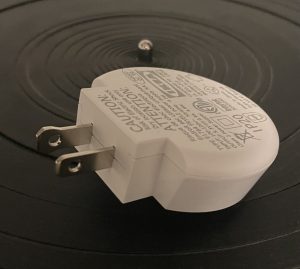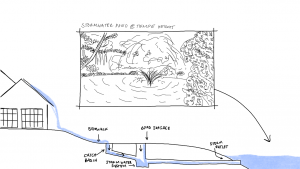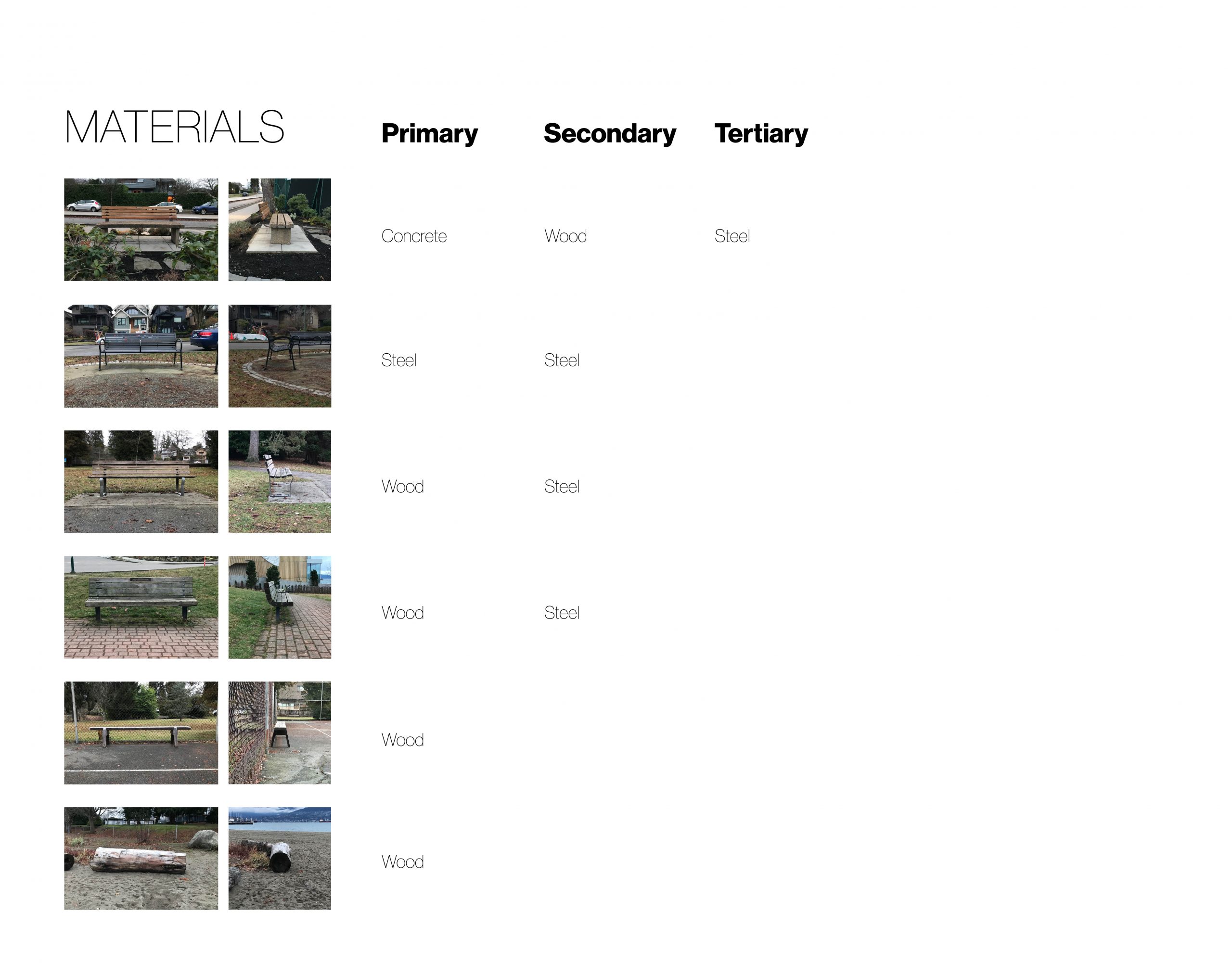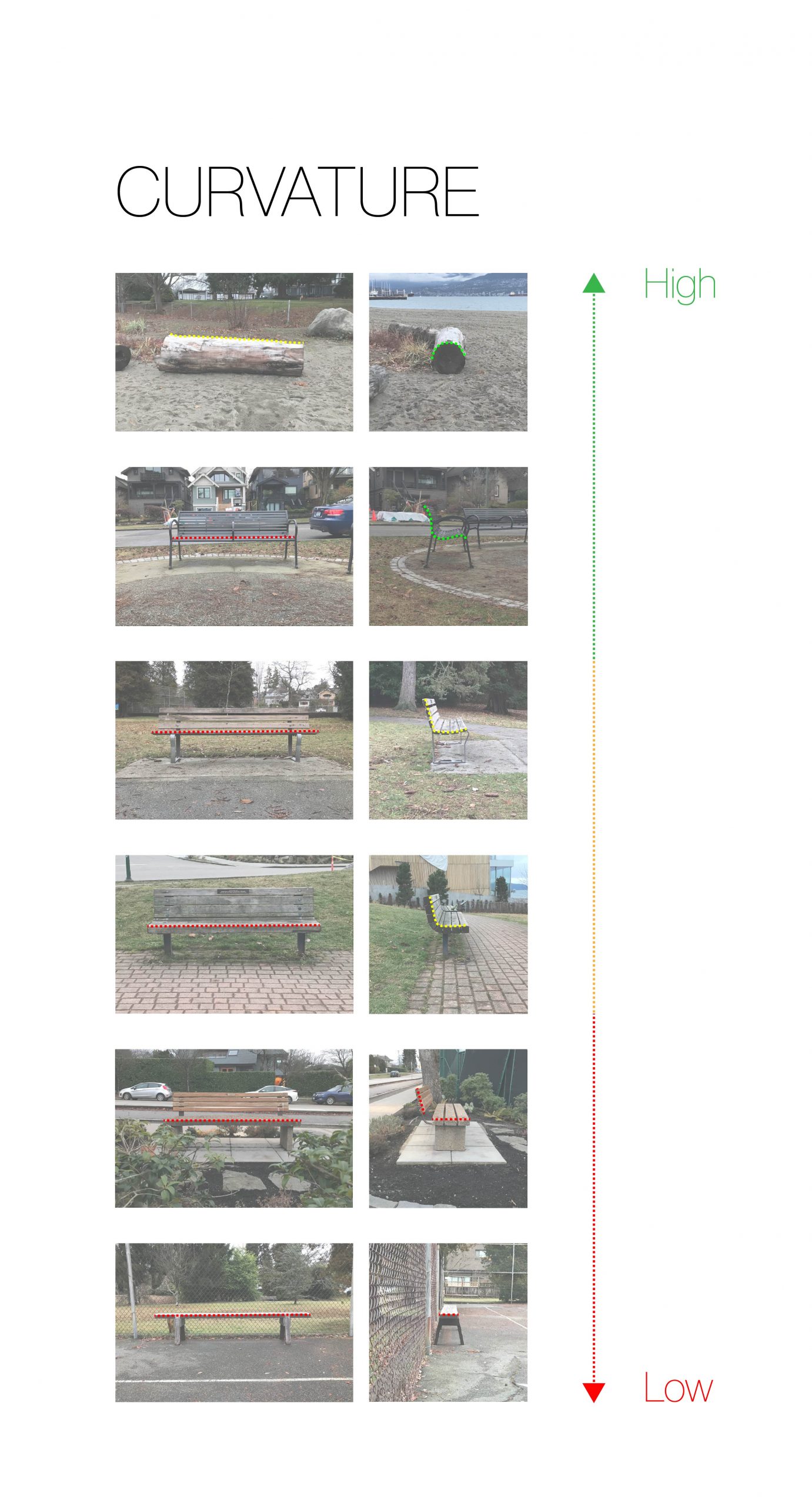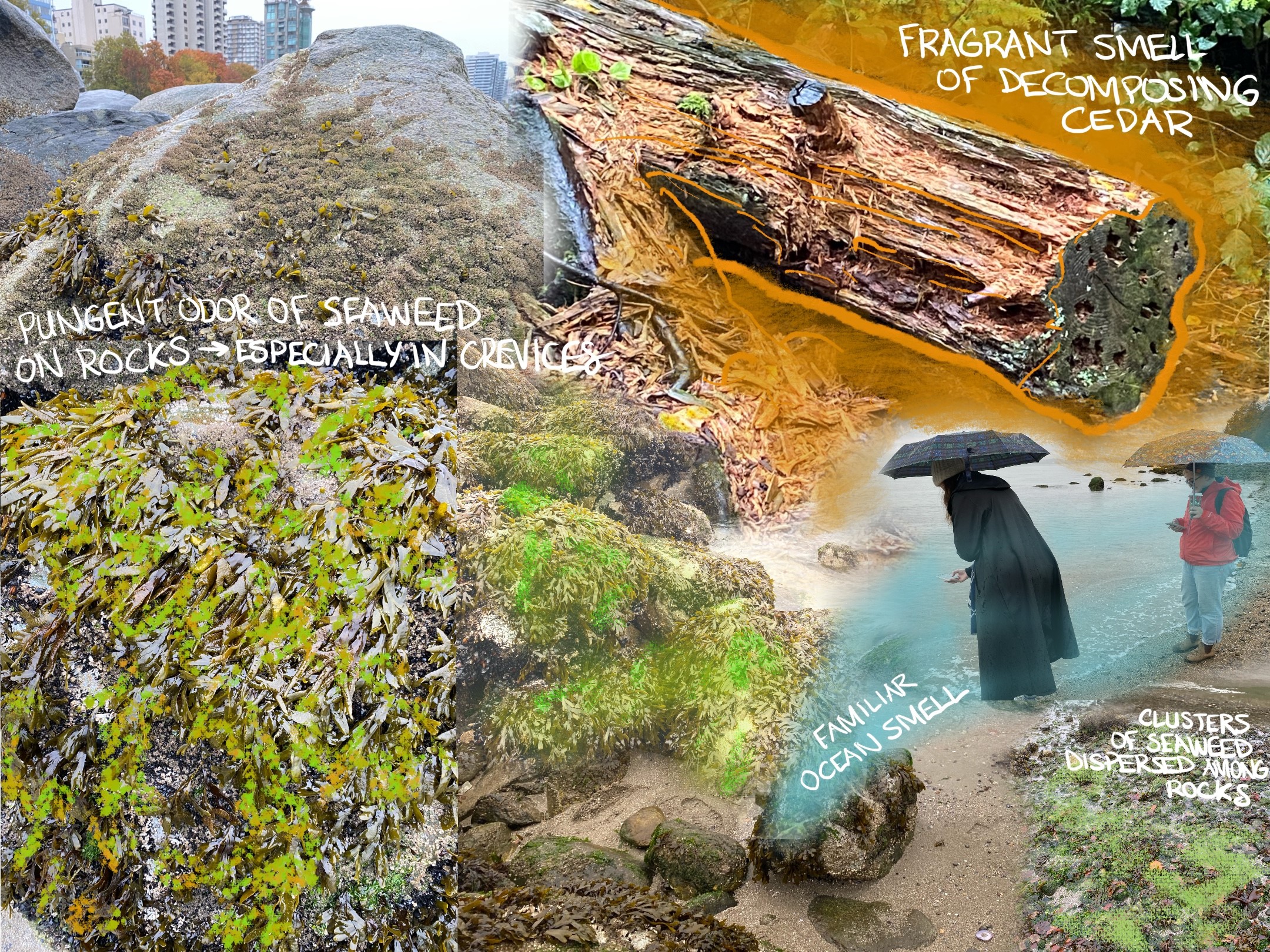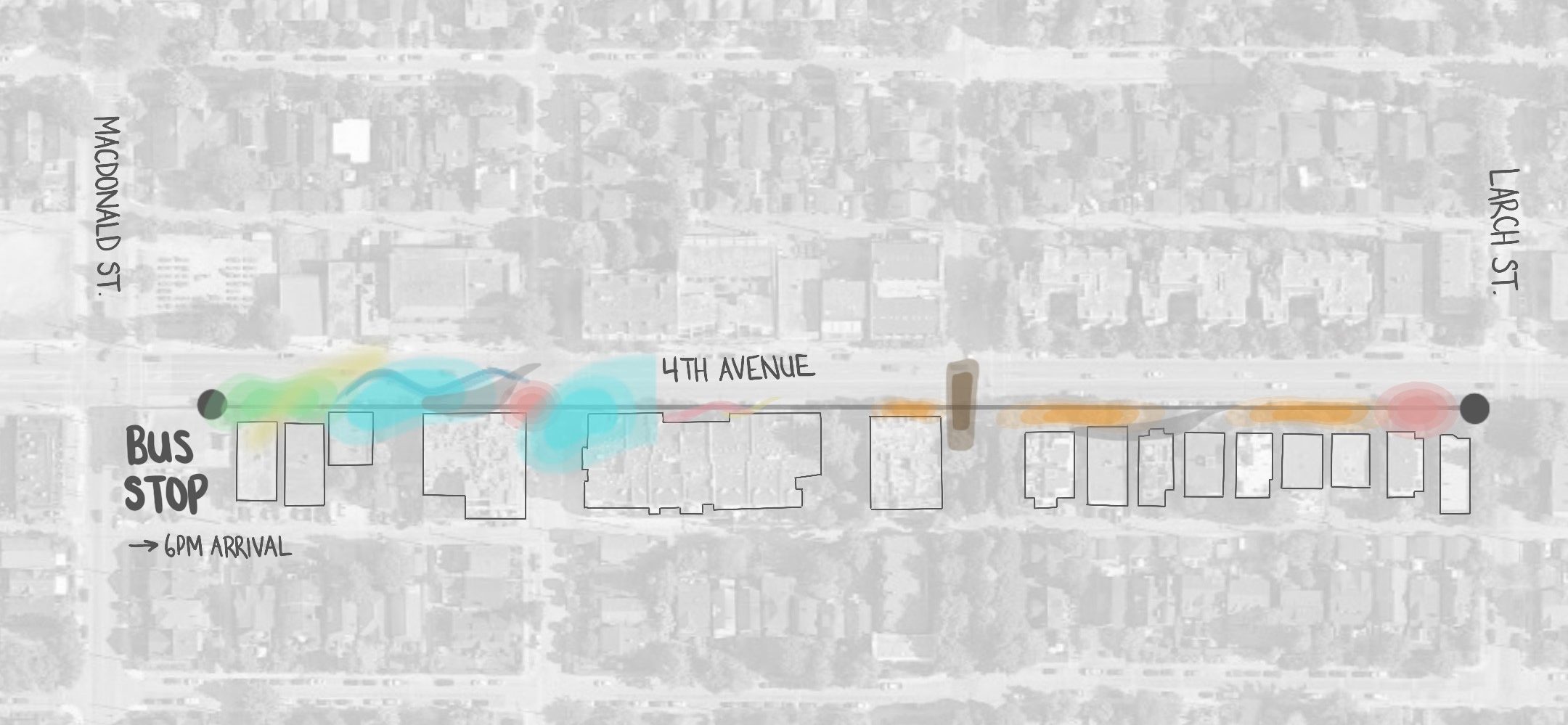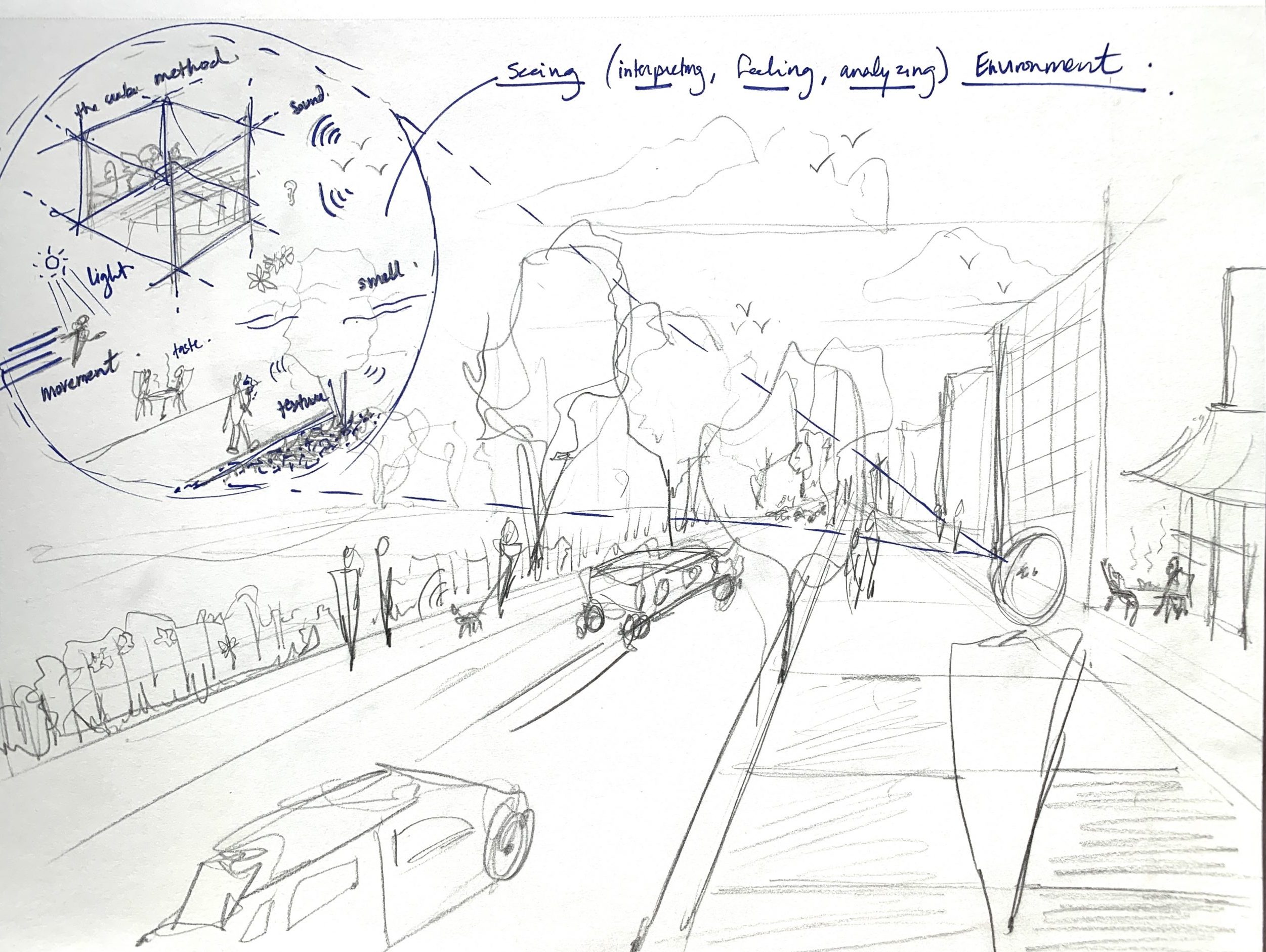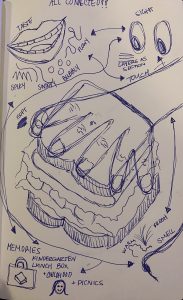
Assignment 4 – Avin Alimohammadi
A11: Seeing, Visual Thinking, Idea | Christopher Reid
Assignment 8 – Avin Alimohammadi
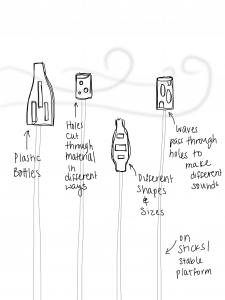
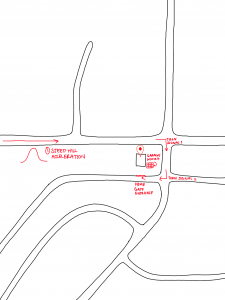
When I was little after every family gathering I would lay in the backseat while my dad drove. I did this so often that I eventually memorized the specific sounds that I would hear when we got close to home. These sounds evoke a deep memory for me so I wanted to capture them and the place they would occur on the map. First my dad would accelerate up the hill by our house, then he would use his turn signal twice to turn into our backyard, then the car would make a bumpy noise as its tires glided over the gate, and finally he would park the car and open the garage door.
Ashley Fleck | Assignment 9 – Smell Notes
In-Class – Seawall and Stanley Park
In the collage, the two smells that had the strongest scent, or smells that I picked out most easily were the familiar smell of the ocean and the smell of the cedar log. Both of these smells seemed to waft through the air, whereas the other smells required me to get up closer to get the full extent of their pungent odour, which I found to be somewhat unpleasant.
At Home
For this assignment, I walked along 4th Ave and tracked the smells that I experienced. I started off with a description and then visualized them after, with the size of the smells reflecting the intensity of the smell.
Assignment 11 – Visual Thinking | Anna Finn
At-home exercise:
For this assignment, I decided to analyze single-family residence entrance gates in my neighborhood. I first organized them based on material.
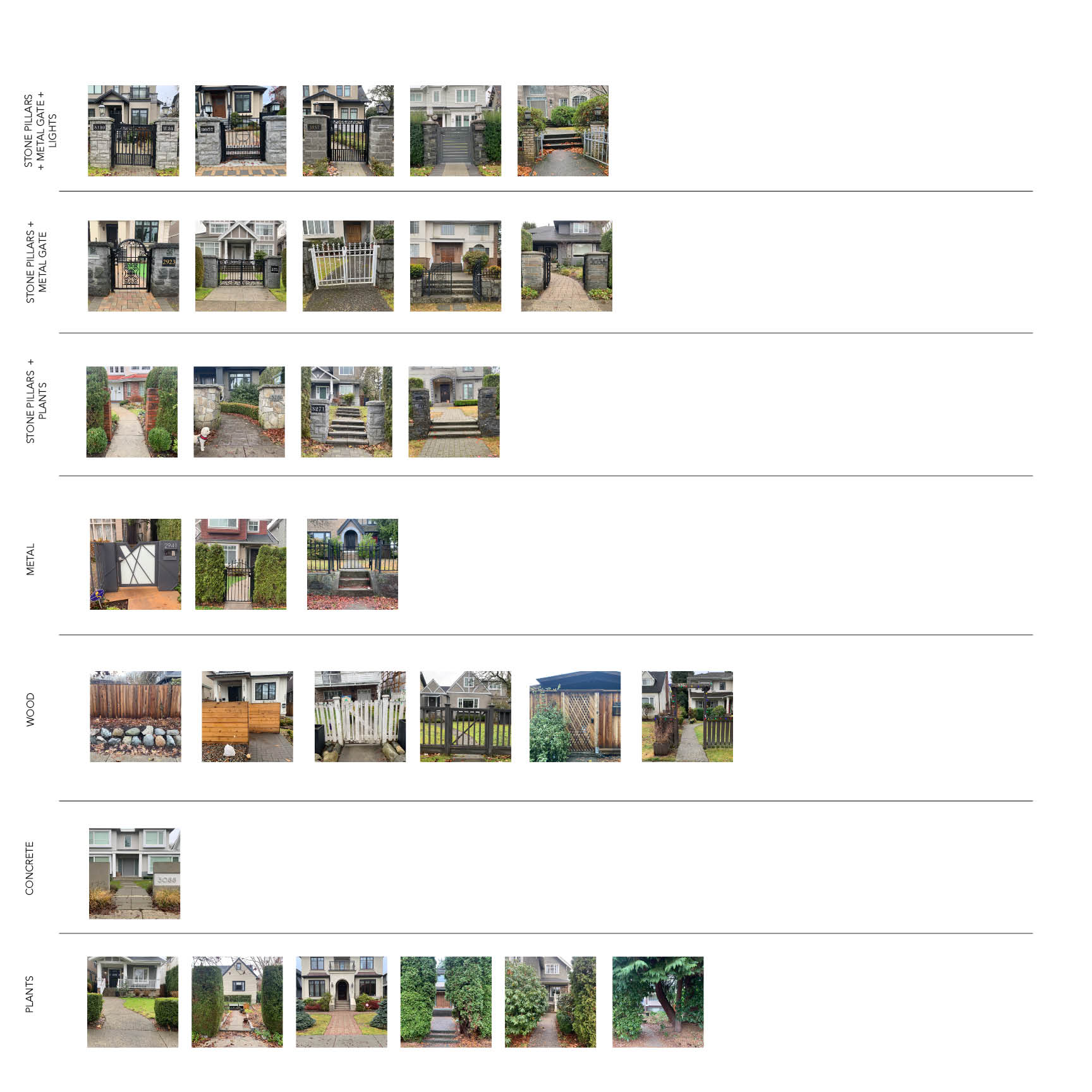
Recently my upstairs neighbours dog escaped through a hole in our gate, and this made me more aware of perhaps why there are so many gates in the area. I then reorganized the entrances that I had taken photos of based on how inviting they looked and whether or not they would keep pets inside.
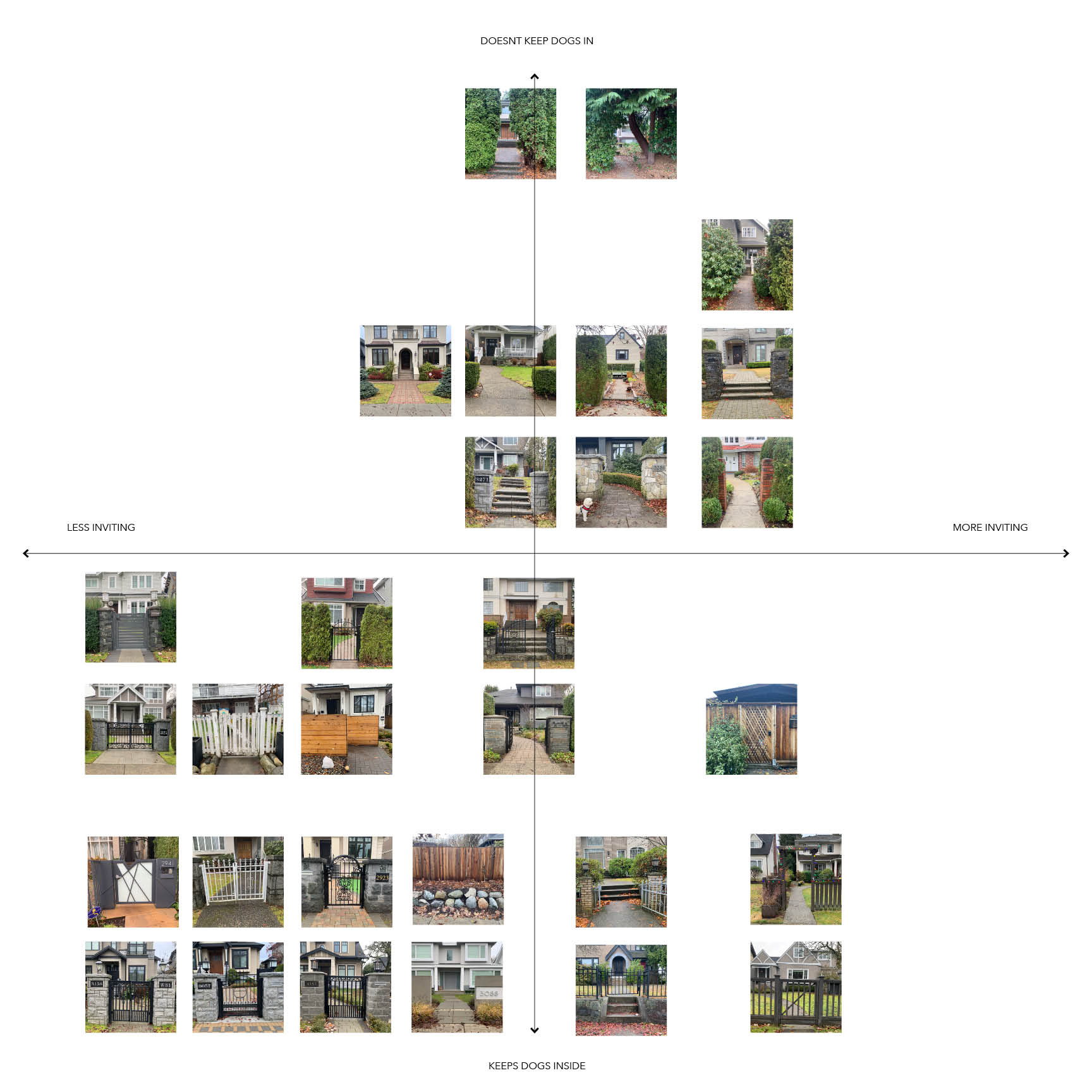
From this analysis I started to notice that some of these gates seemed more inviting than others, and that the entrances with a more visually permeable gate, or no gate at all, and those with more planting, seemed more inviting to me. Additionally I found gates that were wooden as opposed to metal were more appealing (this is very subjective, of course), however, the entrances with metal gates would all be successful in keeping pets inside. Another observation was that the gates that lined up perfectly with the front door of the house seemed more formal and intimidating in some way, while entrances that were offset from the front door were more engaging.
From this I designed my own simple gate, with visually permeable wooden slats that has integrated lighting. On either side tall shrubs act as “bollards” to keep with the style in the area. A stone wall then acts as a “fence” which hosts small shrubs, which allows semi-privacy while still keeping pets inside safely.
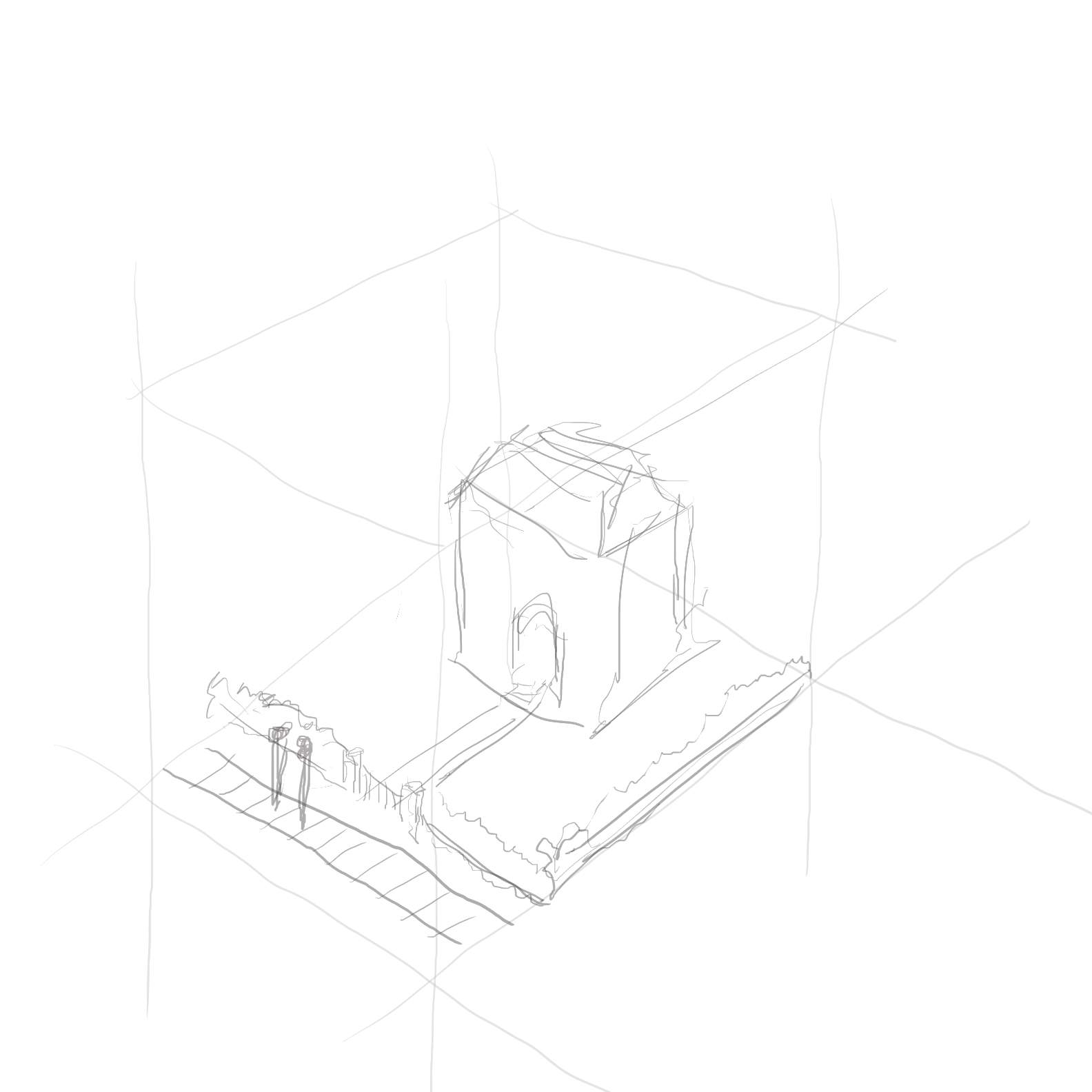
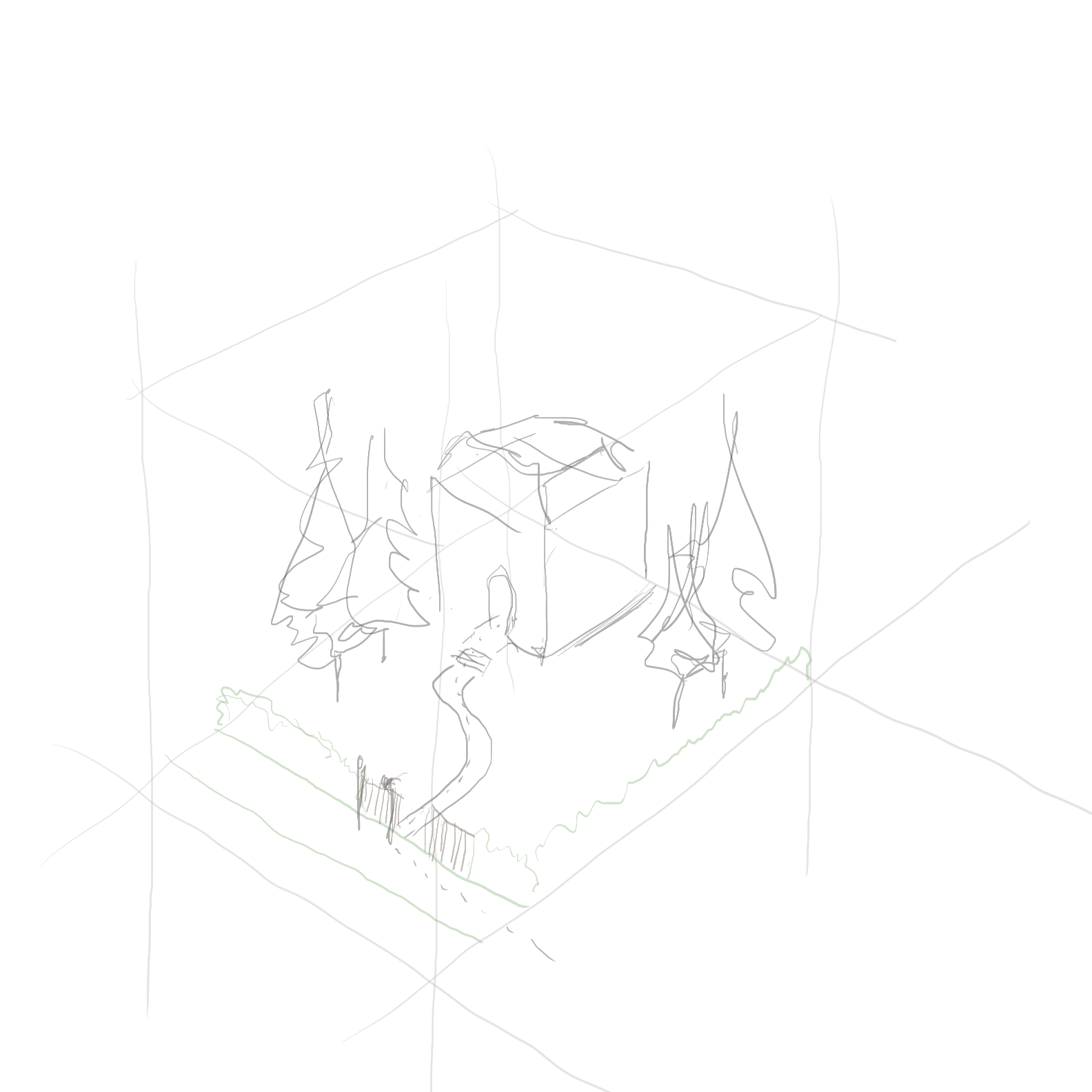
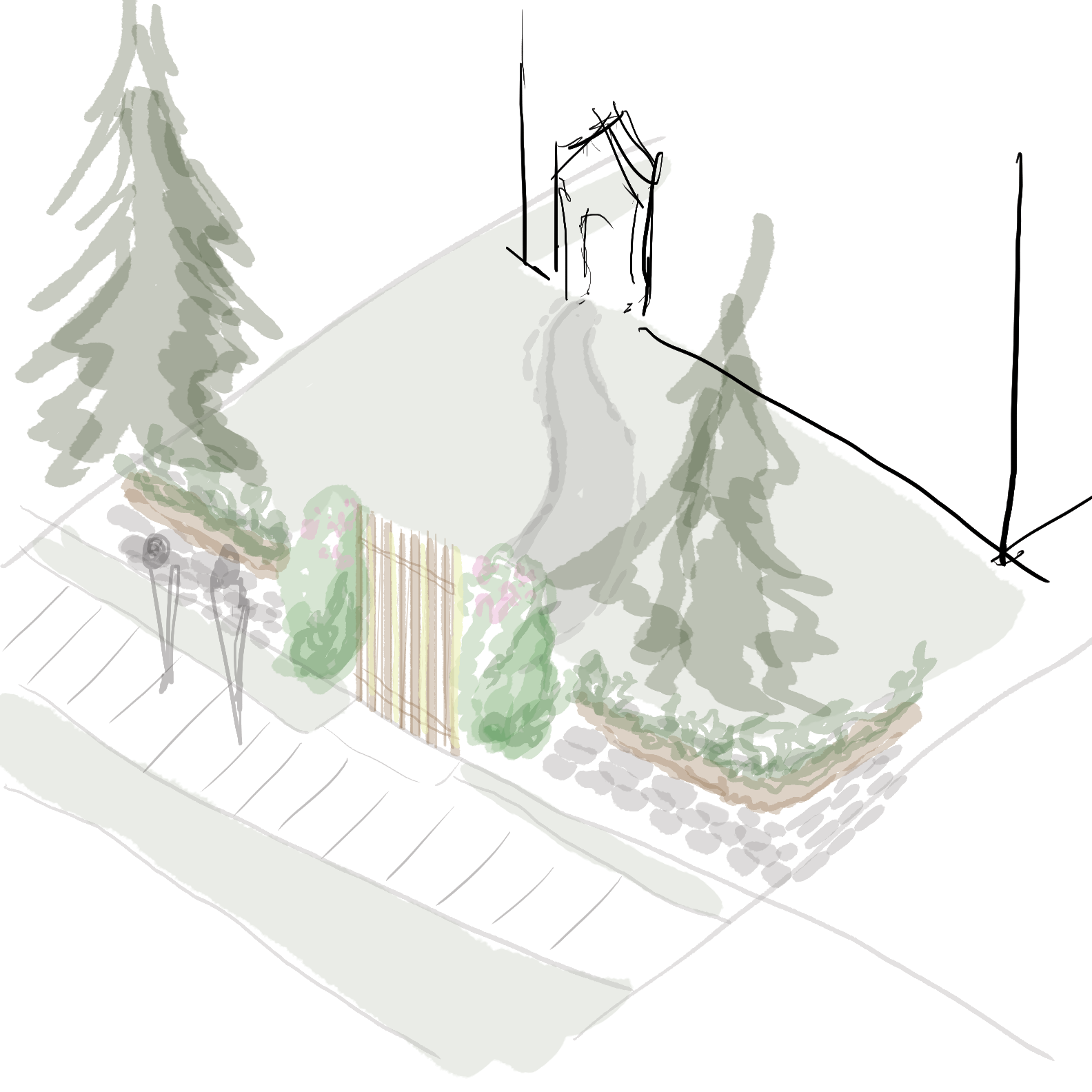

In-class exercise: course summary
Assignment 9 – Avin Alimohammadi

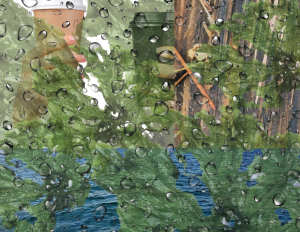
Assignment 8 – Tuning In & Windplay | Anna Finn
At home exercise
Part 1 – Tuning In
For this exercise I was sitting at the gate in the Vancouver Airport waiting for a flight. I wasn’t intending to do the exercise at this time but as I was waiting for my flight I noticed the sound of birds chirping. I looked up to see if I could find the sound source, expecting to see one or two birds who somehow made their way inside the building, but couldn’t see anything. The noise continued and I never did see any birds, which brought me to the conclusion that the chirping was artificial and being played over a speaker. This was intriguing as I assume there is a psychological affect as the sounds are played as a kind of “white noise” to make waiting more pleasant for people. This is when I decided to draw a sound map of the different noises going on around me. I used colours and paint brush styles to depict the impression of the different sounds I was hearing, while intensity of colour marks how loud or soft the sound was.
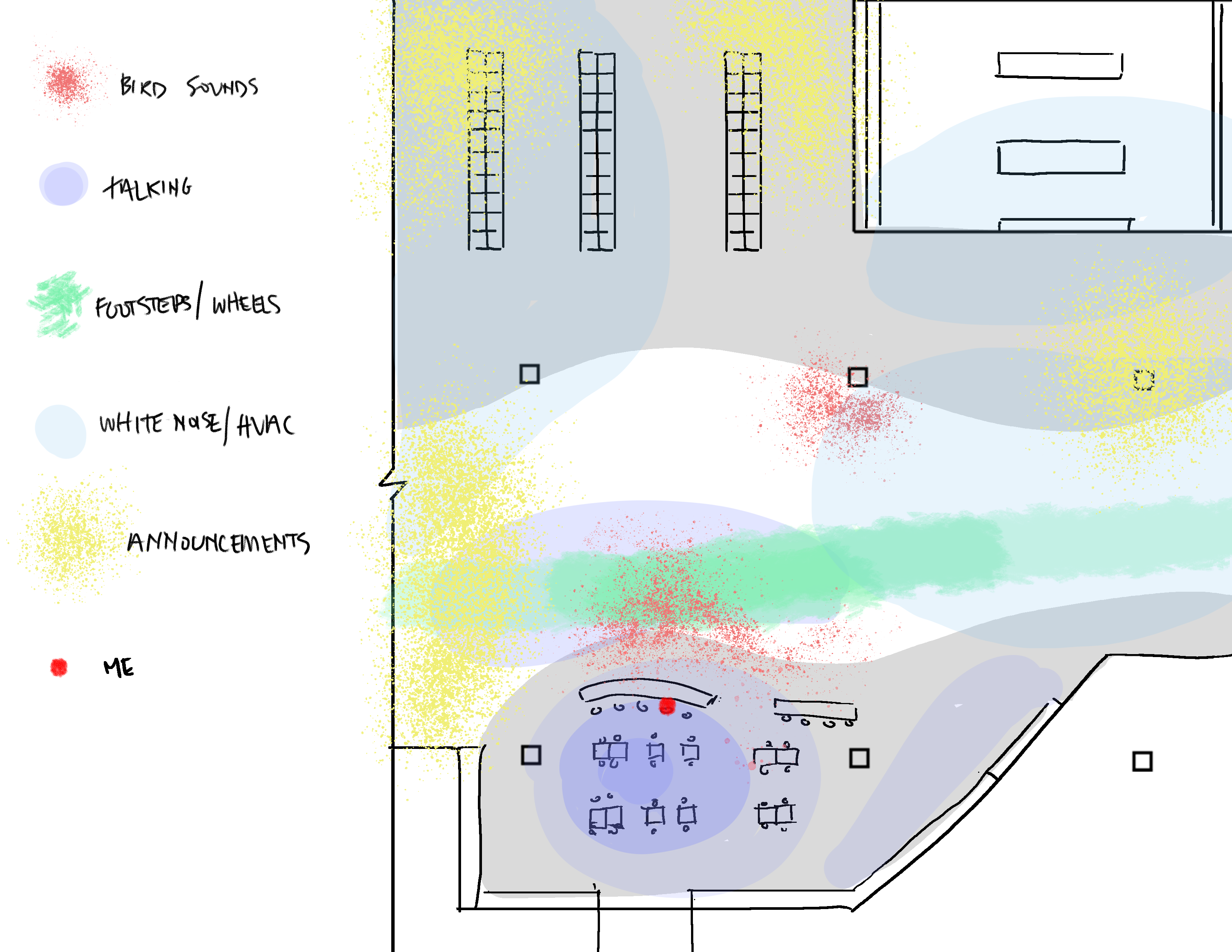
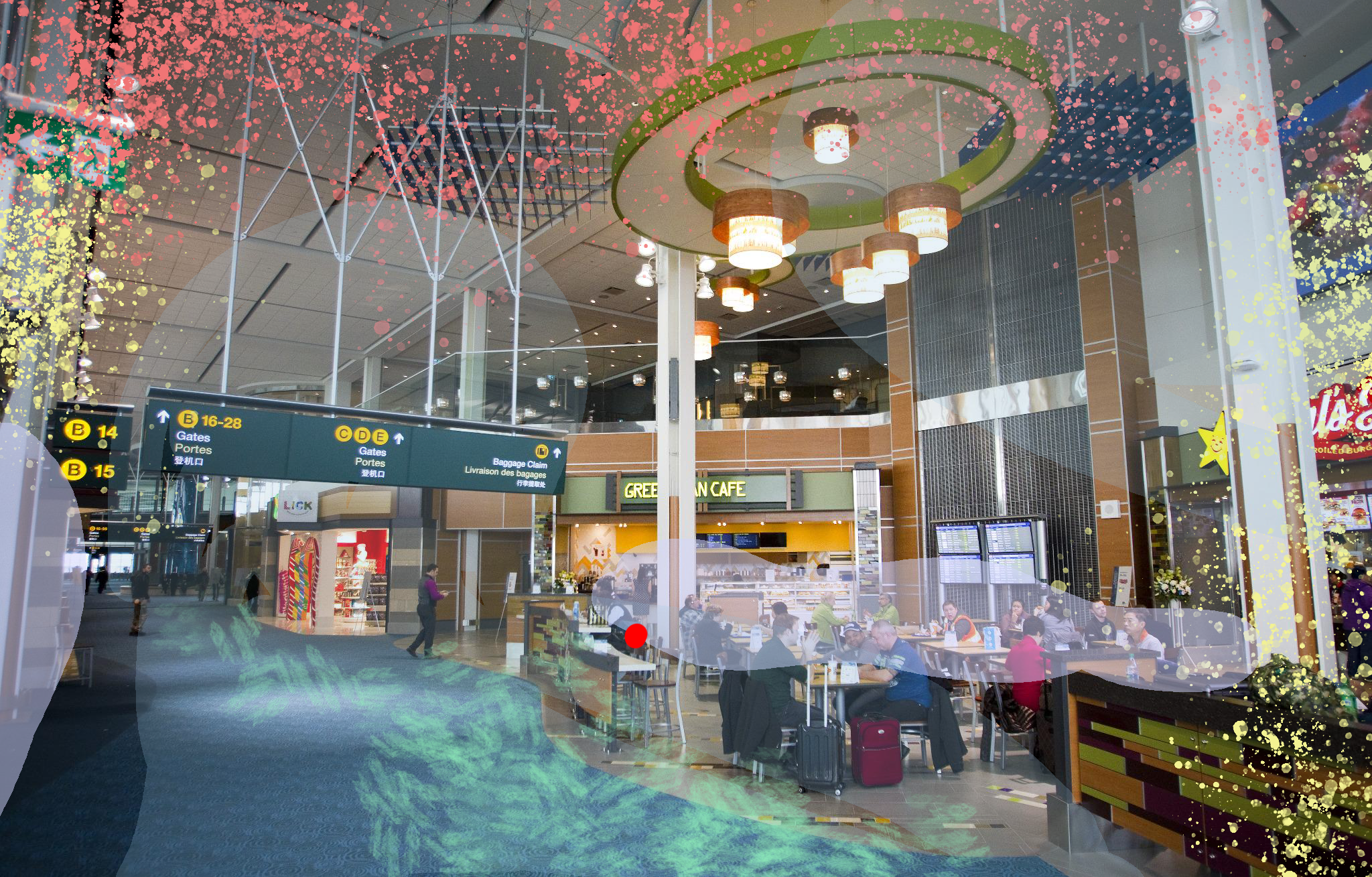
Part 2 – Windplay
For the windplay assignment, I made a Japanese-style wind chime. A piece of paper is tied to a washer, which hangs inside a glass jar. When the paper blows in the wind. the washer hits off the jar and makes a clinking noise. I imagine chimes of different jar sizes making higher or lower pitched sounds depending on the size and intensity of the wind
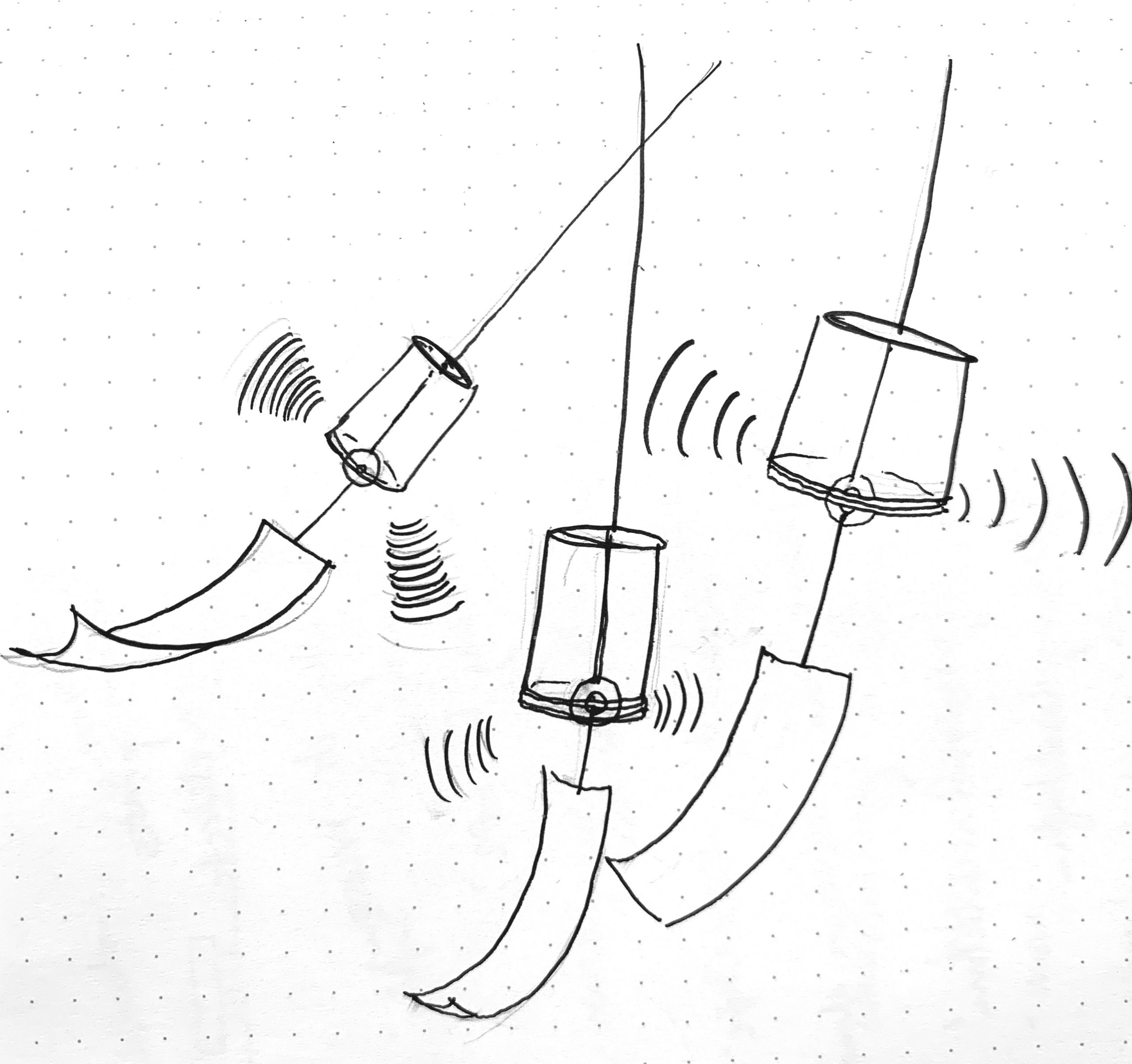
Assignment 11: Seeing-Visual Thinking-Idea | Diego Lozano
In-Class:

At-Home:
I’m an avid biker so for this last assignment I decided to look at bike racks. I’m sometimes endlessly frustrated by the poor design of bike racks so I documented a few examples around Vancouver and decided to look at the design and shape of the features as well as tried to design some new shapes that might be easier to use.

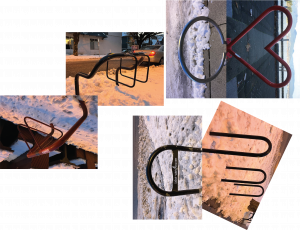
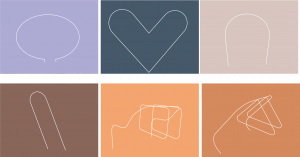
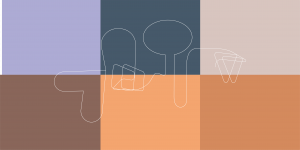

Assignment 5: Using Our Hand – Diego Lozano
In-Class Exercise:
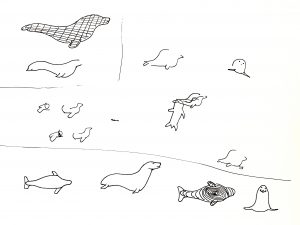

At-Home Exercise:
This exercise for me proved to be very difficult. Most of the objects that were handed to me were objects I could instantly recognize but once I was handed an object I was unfamiliar with the challenge became even hard.
I find my blindfolded drawings more interesting than my visual ones but I had a really hard time drawing more of the two or three drawings. I would draw the sides of the object but once I was done I didn’t know what other way to draw it. I hope to be able to try this exercise again and really practice trying to draw this in different ways while blindfolded.
Blind Folded:

Visual Drawing:
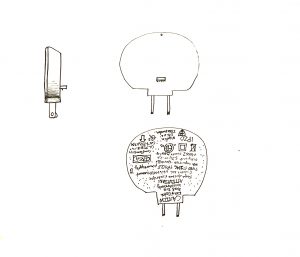
Image Photos:
